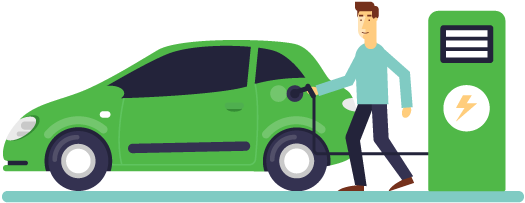By Cyrus Reed, Conservation Director
We know most of you have heard of Volkswagen. Maybe you even own a Volkswagen vehicle. But have you heard of the Volkswagen Clean Air Civil Settlement?
Here’s what happened: Volkswagen essentially had a scheme to cheat the U.S. government and public by building supposedly clean diesel and gas vehicles that met all modern emissions standards... except that they didn’t. And they were caught.
In one of the largest settlements in U.S. history, Volkswagen agreed to a massive settlement with the Department of Justice (DOJ), which involved a number of funding mechanisms to try and mitigate the environmental damage and fraud they participated in. While there are still a number of separate lawsuits with individual states and counties in the works, the DOJ settlement is confirmed and now there is just the details of getting the money out to do some good.

One of the most important funds out of the settlement for Texas is the Volkswagen State Environmental Mitigation Trust, which sets aside $2.9 billion over the next 10 years to help clean up the air from vehicular pollution. While California will receive the largest amount, Texas will be the number two recipient once the state is certified as a beneficiary of the trust, receiving a minimum of $209 million for projects that reduce nitrogen oxides (NOx) in the environment. For some context: NOx, along with other pollutants known as Volatile Organic Compounds, are the culprits of forming ozone in the lower atmosphere, more commonly known as smog, which is a huge public health concern in Texas.
In December, at the urging of the Sierra Club and many allied organizations, Governor Greg Abbott named the Texas Commission on Environmental Quality (TCEQ) as the state agency to plan the use of and administer the funds.
Another fund, known as Electrify America, will invest $2 billion in Zero Emission Vehicle (ZEV) infrastructure and education programs in the United States, $800 million of which will be invested in California. A first round of funding decisions already occurred, with one project in Houston investing in electric charging stations.
So Can This Money Be Used For Anything?
No, as part of the settlement agreement, money in the State Environmental Mitigation Trust must be used for nine different activities, all of which involve getting cleaner vehicles - including buses, trucks, construction equipment, and even rail and ships --up and running. Now, TCEQ must come up with a plan on how it will spend the money. That plan will be published in the Texas register for public comment and adoption, possibly as early as this spring.
What’s The Sierra Club’s Opinion On All This?
The Sierra Club wants states to take advantage of this opportunity to help electrify our transportation system and continue the move away from fossil fuels. As part of the settlement agreement, states are authorized to spend up to 15% of the funds for electric vehicle infrastructure, such as charging stations.
We want to make sure a large portion of the remaining funds helps cities clean up their air by moving toward electric transit buses and school buses, and we believe some of the money should also be used to help electrify our ports, shore-power for boats, and railway stations so that we can get older, dirtier equipment off our roads, ports, and railways, replacing it with more modern electric equipment and vehicles.
As always, there are competing business interests. A number of fossil fuel interests would love the majority of the funding to go toward natural gas vehicles and related infrastructure, not electric vehicles. While it is likely that some money will be available for such vehicles, the Sierra Club wants to prioritize the cleanest technologies, which is by far electric. Not only do they have zero emissions at the tailpipe, they are more efficient, cost less to operate, and have other benefits in terms of job creation and could help electric utilities become more sustainable. As our electric grid becomes powered by more and more renewable resources, those benefits will only exponentially increase.
What Can You Do To Get Involved?
The TCEQ is currently taking informal comments (information on how to submit comments can be found here). We expect the state agency to come out with an initial plan and public participation process in February, and we’ll let you know as soon as we see that announced. Getting public input, and input from local officials in cities most likely to gain access to the funds, will be important in making our state a leader in cleaner air and electric transportation.